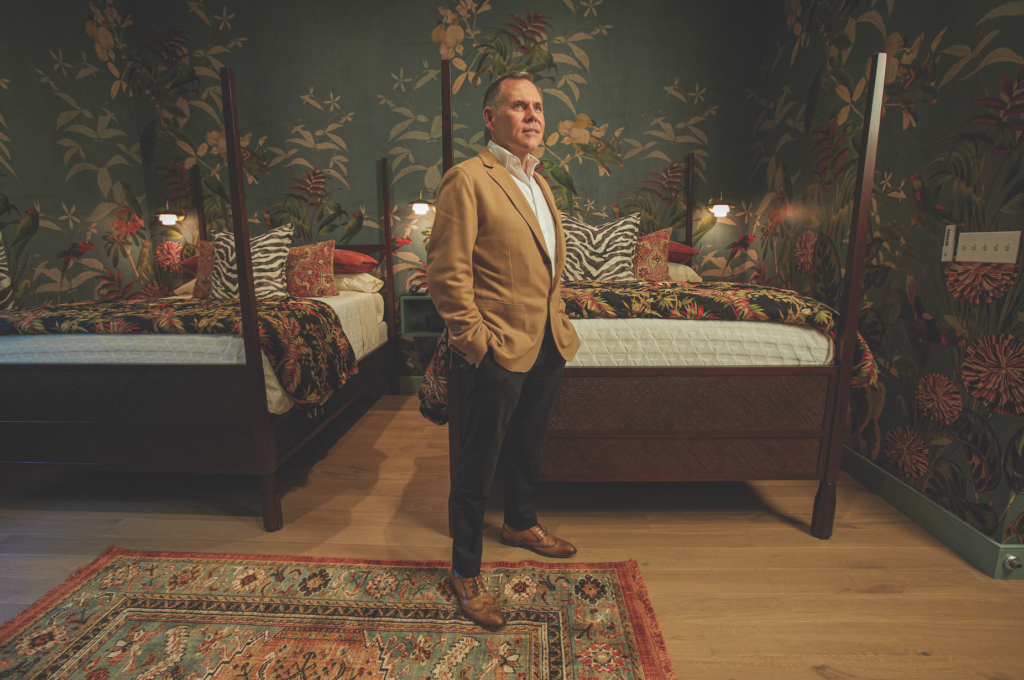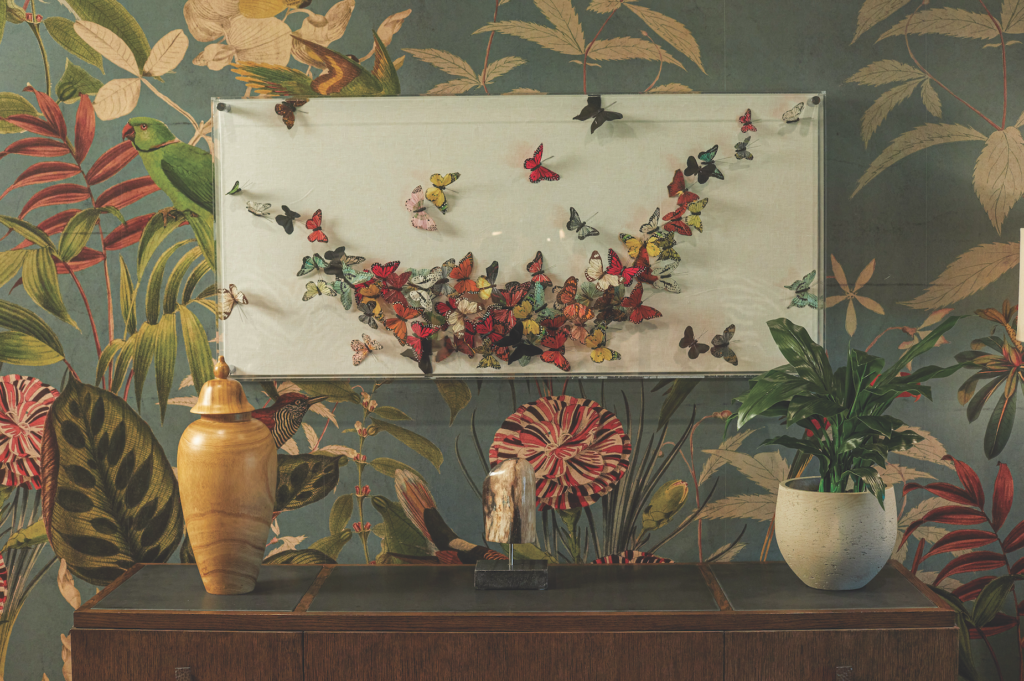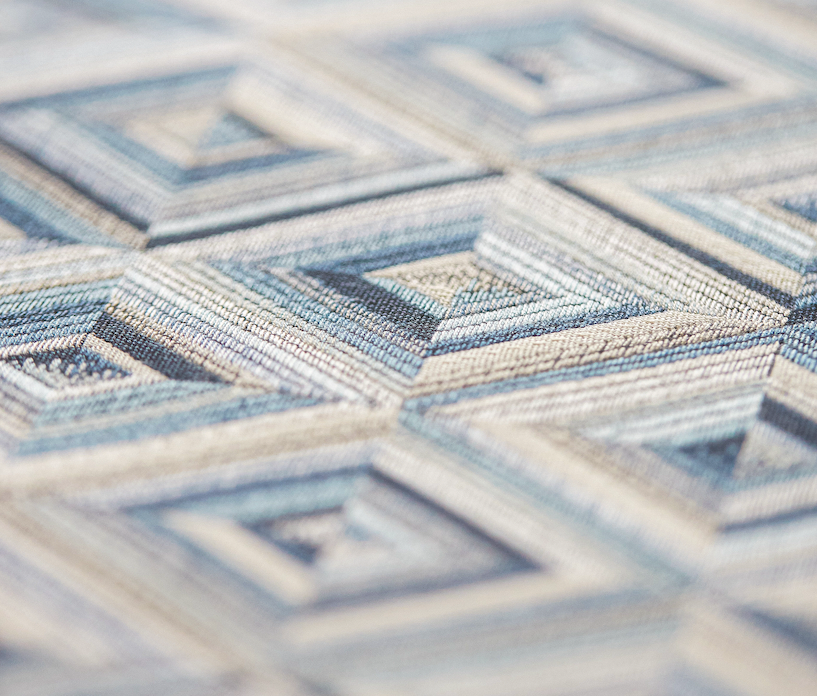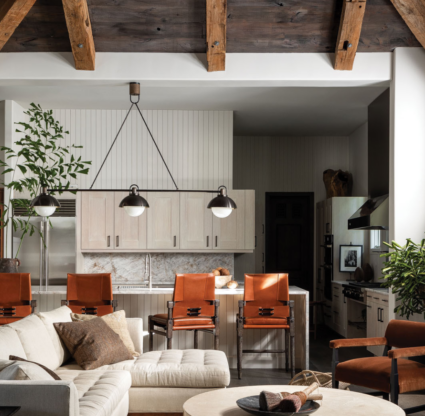The Ronald McDonald House of Southwest Florida, in Fort Myers, provides a home away from home for families with children receiving treatment at Golisano Children’s Hospital. To better handle an ever-increasing number of visiting families, the house completed an expansion that added a new wing late last year.
Through the Project Design project, which industry veteran Suzanne Costa introduced in 2013, design professionals stepped in to help outfit the new wing in a way that makes visitors feel more at home. After all, some of these families spend weeks and even months at RMH. For some of the designers involved, the project took on a very personal note.
Designer David Fruscione
When designer David Fruscione, of Republic of Decor in Naples, was asked to take part, the COVID-19 lockdown had just begun and he found himself with some unexpected free time. Designer Jeffrey Fisher, co-chair of the project, approached Fruscione about participating. “I was thrilled,” Fruscione says. “They offered me the entryway, the hallway that connects the bedrooms and the powder room—I absolutely love cool powder rooms.”
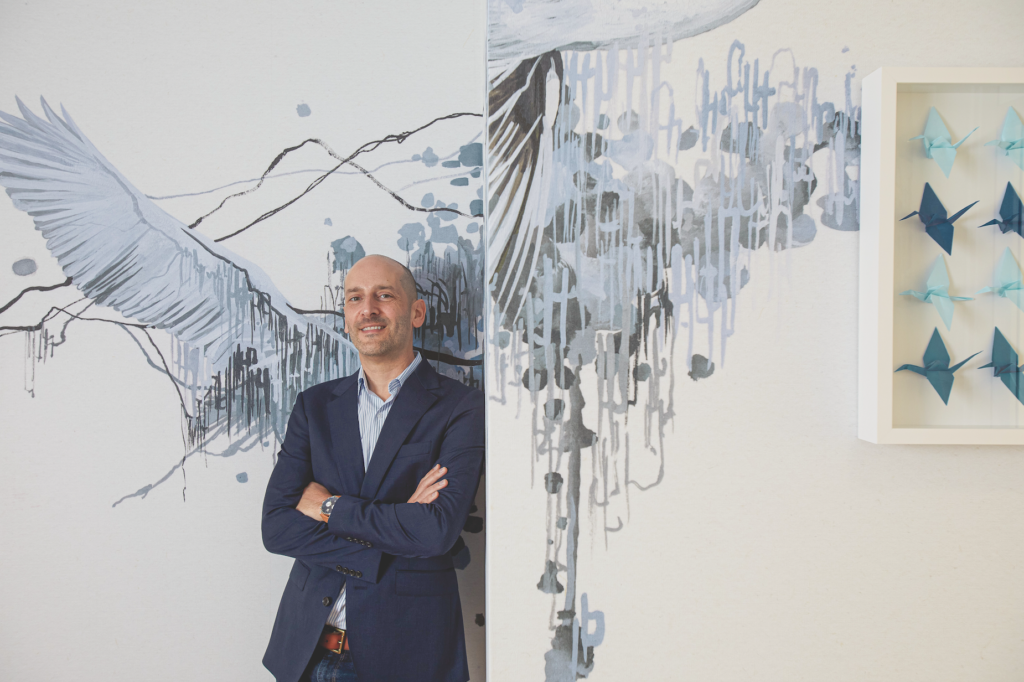
It’s clear he loves cool hallways, as well. The 65-foot-long space that connects the new bedrooms with the rest of the home was transformed by a custom mural wallpaper that features cranes in flight. Fruscione found a crane mural by an artist, then commissioned a company that custom prints them to create the wallpaper. His design is based on an ancient legend that promises anyone who folds 1,000 origami cranes will have their wish granted by the gods. “I was initially exposed to the cultural significance of cranes when I used to live in San Francisco,” Fruscione adds. “And when this project came up, my thoughts immediately went to that.”
During lockdown, Fruscione even learned how to fold origami cranes. He placed his own paper creations—made with origami paper he had collected for years, but never used—in shadowboxes that are scattered throughout his assigned spaces.
Designer Jeffrey Fisher
For his room, Fisher called back to the Ronald McDonald House’s foyer, which was designed by co-chair Suzanne Costa in 2016. Costa had commissioned Fisher’s husband, artist Juan Carlos Collada, to create one of his Butterflies pieces in the shape of a heart—it resides over the fireplace. In Fisher’s room, the butterflies are more freeform, gathering in an upward arch. “I wanted that space to really be experiential for them—to allow for a family to feel good or appreciate where they are for even just five minutes,” he says. To that end, Fisher used a tropically dominant wallpaper in deep, but muted, tones. Its print of birds and fauna sets the scene. “I went there,” Fisher says with a smile. “That was the jumping off point. And because I’ve never seen an animal print I didn’t like, it really allowed me to keep going—layering the bed with textures and prints.”
The bathroom continues the theme. A patterned tile on the floor climbs the shower wall, while acrylic wallpaper in the same tones—featuring an abstract mountain scene—wraps the rest of the space. It’s transportive. And that’s what good design is all about. Fisher considered that people would be spending 10 to 12 hours a day in a hospital, and aimed to create a space that when they returned to rest for the night, would take them into a different setting—a place where parents and family members could reset and set their intentions for the next day. “So few people live in decorated spaces, so it gives that family an experience,” he adds. “They may not want that for their own home. But it is completely different and unexpected and people are very affected, in a good way, about design. There is something healing about it.”
Designer Pamela Durkin
Naples-based Pamela Durkin intimately understood the importance of the project. When the designer’s youngest son was born, he needed to stay in a hospital’s neonatal intensive care unit (NICU) for 10 days. To her, it felt like an eternity. She knew firsthand what parents could need during those trying times. “I went back to the place where I was and what I felt I needed,” Durkin says. “That was the basis. I wanted them to be super comfortable and be able to sink in and relax.” She says the room is meant to inspire them, to say, “This is hard, but you’ve got this.” To that end, she placed supportive affirmations around the room, embedded in works by Christina George, an artist from Bonita Springs. Messages such as “inhale, exhale, inhale, exhale” serve as a reminder for families to just breathe.
The designer also left a book with inspirational quotes, coloring supplies for kids and a small box on the nightstand that is filled with little coins with stamped inspirational messages that families can put in their pocket and take with them: “You are stronger than you think.” “Just take one step at a time.”

Durkin thought about how the staff would maintain the space. It needed to be easy to clean, so she created a custom upholstered headboard that runs the length of the wall and is affixed to it so that beds can easily be pulled out. The wallpaper is a faux leather in a silver gray that can be wiped down.
Other interior designers and design vendors involved in the project include Alexis Marie Interiors, Dwayne Bergmann Interiors, Ficarra Design Associates, Jett & Company, Renée Gaddis Interiors, Kravet, Naples Flooring Company, California Closets, The Shade Store, Cambria, Phillip Jeffries and Wilson Lighting. Fisher and Costa co-chaired the project. Together, the group prove that by lending a hand, working with intention and adding beauty, people can help make each other’s loads a little lighter.

